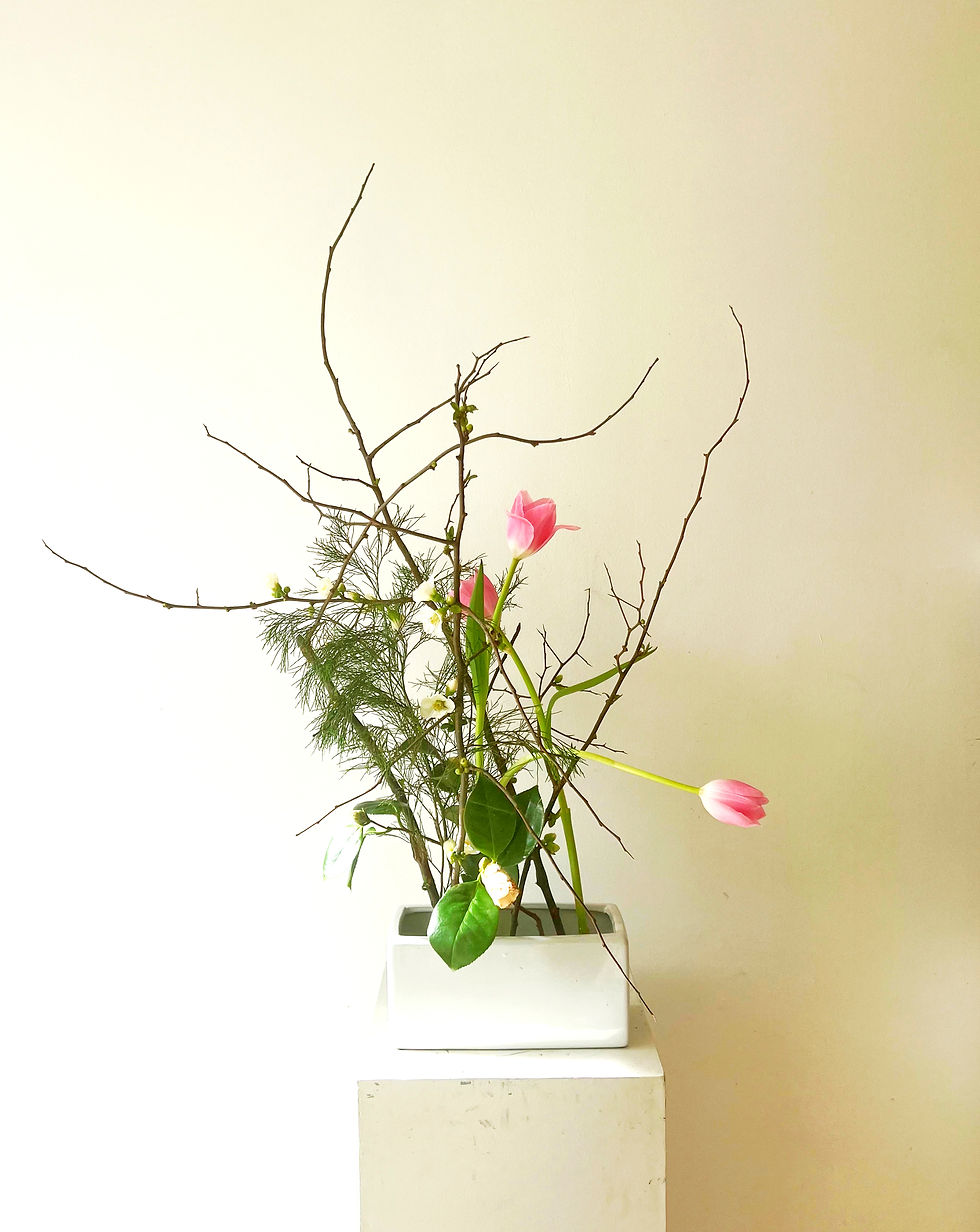Living Nature Expression
- Azumi
- May 11, 2024
- 2 min read
Autumn colours in Harmony
Goal : Recognise the delicate seasonal variations in plants and integrate these features into the design.
Autumn plants are unique as their leaves and flowers change colors, stems become thicker and sturdier, and side branches twist and turn.
In ikebana, emphasising the distinct features of each element, whether in shape or colour, is essential.
Observing and understanding the changes flowers undergo with each season throughout the year enriches our comprehension of the materials and adds depth to our creations.

Flowers used : Hydrangea, Nadine, Rose-hip, Autumn leaves
Hydrangeas can be temperamental as cut flowers. Sometimes they last long and dry beautifully, while other times they wilt quickly. There are many reasons for quick wilting, but they often have a good chance of reviving. Recut the stems and leave them deep in water for a few hours. Using flower food can help maintain their color and longevity
Tips :
1. Choosing the right combinations
The colours of the materials are also uniqu
e. We select a focal flower and plan the colour scheme to emphasise its details.
For instance, hints of red and blue can be seen in a whitish hydrangea flower, showcasing a unique color transformation characteristic of autumn.
To make these red and blue hints more noticeable, you don't pair them with similar whitish colours. Instead, you enhance these subtle colours by adding more distinct reddish or deep bluish tones. This approach helps to bring out and emphasise the mixed-in colours
2. Using natural curve
A curved branch can be positioned forward without constraint, creating angles. By bringing it forward, the arrangement appears more dynamic, expands the outline, and adds depth to the overall composition.
Ask your question
0%Write an answer















Comments